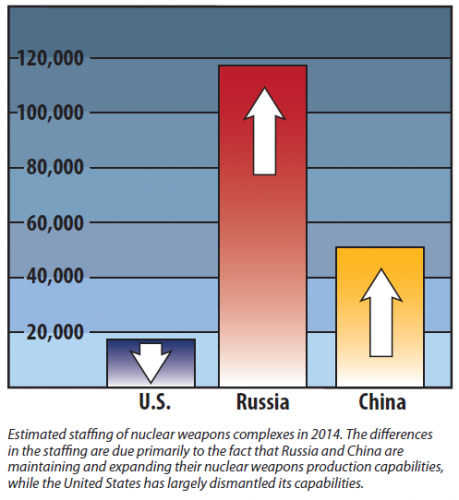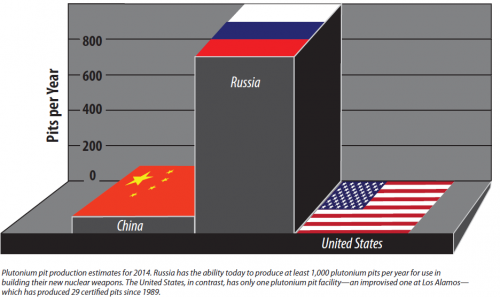kaiserd said:
NeilChapman said:
kaiserd said:
There is a world-wide issue with delays and cost over-runs for major defense procurements which helps feed into this issue.
1. The US airforce and other armed forces will remain extremely powerful and capable going forward but you will have to cut your cloth and accept that your relative superiority over top tier peers will inevitably decline.
2. In that context most of the decisions made make perfect sense (for example hard to justify 700 F-22s when Russia had barely 2 new Flankers per year to scratch together).
The swing-back of the pendulum more towards ground based air defenses was inevitable and was just delayed by decades by the temporary enfeeblement of your main rival. The likes of the F-22 and F-35 were never intended to permanently invincible in this increasingly threatening environment; 3. the realistic intention was to remain as survivable as possible. Even with a blank cheque in the 2030's the US airforce will find it impossible to sustain this golden period of unchallenged dominance that it has enjoyed since the fall of the Soviet Union.
1. Bullshit
2. The US has a global responsibility. Russia does not. You don't build a quantity of airframes for a single adversary. You build what you need to engage multiple adversaries simultaneously.
3. You're absolutely incorrect. "No bastard ever won a war by dying for his country. You won it by making the other poor dumb bastard die for his country." The US wants overwhelming odds in its own favor - I guarantee it.
I'm happy to have my views challenged; perhaps best to keep the tone less confrontational/ wilfully ignorant?
1. In 2030 the US will have the (an admittedly well worn) F-22 force, many hundreds if not thousands of F-35s and whatever emerges from the F-X NGAD project will have likely entered service or be about to enter service. Realistically how many T-50s do you think Russia will have in service? Realistically how many equivalent aircraft China will have in service? To be fair you will suffered some relative decline (F-22s versus... Nothing comparable) but that was inevitable. The F-X NGAD will likely be superior to its foreign equivalents but then their next iterations will close the gap, etc etc. the classic pattern repeating.
When the F-22 was planned a rapid Soviet response would have been anticipated by the US (and was planned by the USSR, the MIG 1.44 project) that would have drastically pulled back the likely superiority and kill/loss ratios of the F-22. The fall of the USSR meant that the F-22 got an extra approx 20 years without a direct competitor.
2. Yes I agree. But the US airforce didn't for a period of some time have a real peer competitor after the USSRs fall. In that period the F-22 was bought (I agree not enough bought by the way, just that I understand the reasoning for some of the cutting) and the teen series received AMRAAM and other enhancements. Has the US actually struggled to obtain or lost air superiority during this period?
The F-X NGAD will face tougher, more diverse and more rapidly evolving competitors than F-22 did during its early life (well up to when the likes of the T-50 and J-20 actually enter service).
3. Wanting and having are 2 different things. The truth is you go to war in what you can afford and in what is technically as well as budgetary possible. Short of a new revolution with the same massive impact as stealth the US level of technical superiority will inevitably erode given the resources and techical capabilities of your competitors; this is certain even if you literally had a blank cheque (which the US clearly does not), with more and more spending to achieve smaller and smaller incremental advancements.
Hopefully production advancements can make these aircraft cheaper and quicker to buy and field, but this will be equally true for your competitors.
1. I wasn't suggesting your comment was willfully ignorant... The US put a man on the moon in 10 years. The USSR crumbled trying to compete with the US. The US lands rocket boosters on ships at sea. Doesn't seem smart to bet on the inevitable decline in US superiority over top peers.
2. The US military is evolving its tactics and its balance of combat systems as threats arise. Historically, drawdowns cause serious problems as the pendulum swings too far. Maintaining 12 million after WWII would be an obvious exception.
3. And you end up with a lot of dead people. Much better to have overwhelming superiority to encourage your adversary to not make poorly calculated decisions.
There are a couple of countries - today - that feel it is necessary to threaten their neighbors to maintain political control in their own countries. This makes them volatile and high risk.
For discussion, we've seen the PRC pushing for sovereign access to blue water with the 9-dash line. They've used "civilian" companies with the aim of providing China's "navy" access to ports from the South China Sea to the Arabian Sea - including the Malaysian port of Kuantan, Colombo in Sri Lanka, Darwin in Australia, and Gwadar in Pakistan.
The problem is that the PRC uses paramilitary or civilian vessels to muscle its claim. The PRC wont need to send its actual navy to the newly constructed ports to exert increased control over the regional shipping lanes. Look what's happening in the SCS today.
The ECCT brought together for the 2030 Air Superiority Flight Plan, it seems to me, understands the logistical and technology issues associated with the threats that may emerge from my example environment.
What we know is that whatever we're dealing with will come with challenging A2/AD and will require air superiority - the hypothetical threat I mention above or a country threatening Europe.
So - it will be necessary for whatever F-X / NGAD is to have a particular set of capabilities. They're being sorted out.
Yes - I believe that the US can build the first iteration of a new aircraft in an extraordinarly short period of time.
I expect the timeline to follow new engine development - with IOC in the mid 2020's.
What that aircraft will look like? I don't know. Depends on what we need.
Perhaps there will be a variation of the B-21? Depends on what we need.
Perhaps it will be a wicked fast air superiority fighter? Depends on what we need.
Perhaps it will have a 3kNM range? Depends on what we need.
I do know that I wouldn't want to be on the receiving end of the death and destruction it will deliver. That war will be won "by making the other poor dumb bastard die for his country."




